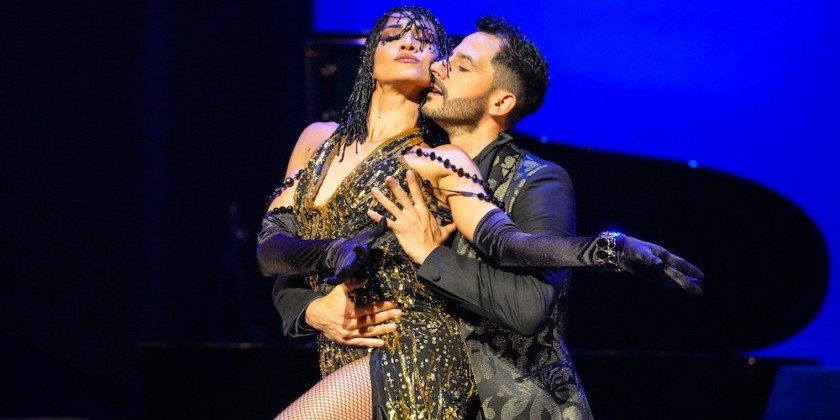AUDIENCE REVIEW: AUNTS' Time Share: Chain Curation

Company:
AUNTS' Time Share: Chain Curation
Performance Date:
05/18/2013
Company / Show / Event
AUNTS' Time Share: Chain Curation
Performance Date
05/18/2013
Venue / Location
Arts@Renassaince
A bit about you:
(your occupation, your website, etc.)
informalfloor.blogspot.com
Freeform Review:

Dedicated Space
You are supposed to hear a soundscape of measured plops and drips, the rippling waves of noise- a balm to your senses. Instead, “Bathtime Studies: Duet,” choreographed by EmmaGrace Skove-Epes becomes a collaboration with an unknown guitarist performing in an adjacent room. Skove-Epes, sitting on an inset windowsill watching Gyrchel Moore and Nadia Tykulsker perform her choreography, doesn’t flinch at the overlapping of performances. It washes over her.
“Bathtime Studies” was one of countless (you could count – I didn’t) works performed at AUNTS' "Time Share: Chain Curation." The performances spanned four hours and traveled through multiple rooms, hallways, and bathrooms. The show, with an entrance fee of a donation of clothing, or beer, or “just whatever,” also doubled as a flea market and snack party. You watched the dances, or ate. You discussed the artists’ work, meandered from one installation to the next, or just got drunk, as you pleased. Many did please, and they filled Arts@Renassaince in Greenpoint – a bleak structural core stripped of any decoration.

Among the things one could watch: a woman fingering herself in a corner room -- for that you had to push past a crowd. (It’s odd, pushing your way through sardined bodies to get a good view of a vagina. Is closer better for a detailed view? )Edge back a few steps and you find the woman behind you in the red bathing suit with a wedgie and long blonde wig. She scrapes her knees against the cement as her body shakes heavily in time to the sorrowful song of a woman wailing.
The solo form dominated the evening, and one had to wonder if choreographing for one (and usually oneself) was purposeful or by necessity. It was gratifying to watch an artist seep into an idea with singular clarity, but intention sucked some of the dances into vortexes.
A dance that began with pained crawling on the floor also middled and ended on that floor.Improvisation can find movement and expression unknown to the choreographed , but dance one note for ten minutes and the audience will move on(maybe to get another beer.)
A choreographed duet does not allow complete release into the dance. There are parameters that you and your partner agree upon so that your have structure. Perhaps some striated thinking behind the duet comes from collaboration of different mindsets. “Bathtime Studies” had great sensitivity to form. The patterned time and structural grids loosened with movement.
When the guitar from the other room overpowered the “Bathtime Studies” soft music, Moore and Tykulsker relied on the syncing of their internal rhythms. After a brief prelude to establish the edges of the room-- three quick jaunts around the space-- the duet settled its focus on a rectangular ladder of tubs, spaced out equally in 2 rows. The dancers began plucking their way up and down the rows. With a bucket weighing heavy in their hands, they slowly poured their burden into the bins. Moore plunged her foot into a container that wasn't yet filled with water and the lack of physical or audible resistance suspended the step for a moment. When both women simultaneously buried their faces into a miniature pool and blew bubbles, that gave us pleasure. When they submerged their eyes, mouth, nose, and became still, we stilled our breath too.
Accessing what the audience knows of water – its density, heat and wetness – Skove-Epes created a work that physically attuned viewer with performer. As the dancers repeated (and repeated) a unison duet that traveled precariously along the raised edges of the bins, their speed increased incrementally. The subtle intensification was enough to make your eyes, nose, mouth wonder what it would feel like to be pushed into the water. Your body wondered what this dance might feel like. You kept watching.
The decaying walls of Arts@Renaissance are strong enough to enclose each performance within a dedicated space and spatial the separation is enough to justify the self-contained nature of each solo (and sometimes a duet). But the music will not stop at physical barriers. One dance seeps into the next, their singular purpose blurred.
Or, perhaps it was an ensemble work all along.












